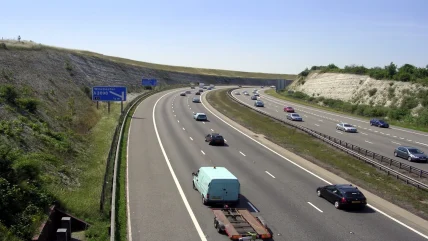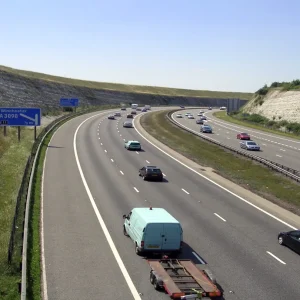
In recent years, societal polarisation has become a significant issue across various nations, including the UK. This polarisation, characterised by growing divides in political, social, and economic views, has profound implications on numerous sectors. One such sector is the van and light commercial vehicle (LCV) market. As the UK navigates through these divided times, understanding the impact of societal polarisation on this market is crucial for stakeholders, including manufacturers, dealers, and fleet operators.
The Current State of the UK Van and LCV Market
The van and LCV market in the UK has traditionally been robust, driven by the country’s dynamic small and medium-sized enterprise (SME) sector, the rise of e-commerce, and the need for efficient logistics solutions. According to the Society of Motor Manufacturers and Traders (SMMT), in 2023, the UK saw over 360,000 new LCV registrations, reflecting a resilient demand despite economic uncertainties.
However, this market is not immune to broader societal trends. As polarisation intensifies, it influences consumer behaviour, regulatory landscapes, and economic stability, all of which are critical to the van and LCV sector.
Political Polarisation and Regulatory Impact
One of the most direct ways societal polarisation affects the van and LCV market is through political divides, which in turn shape regulatory frameworks. In the UK, political polarisation has been evident in debates over environmental policies, taxation, and Brexit.
Environmental Regulations
Environmental concerns are at the forefront of political discourse in the UK, leading to stringent emission regulations for vehicles. The government’s commitment to achieving net-zero carbon emissions by 2050 has resulted in policies such as the ban on the sale of new petrol and diesel vehicles by 2030. This policy shift towards greener alternatives has significant implications for the LCV market.
Manufacturers are pressured to accelerate the development and production of electric and hybrid LCVs. However, the market transition is complex and costly. Companies like Ford and Mercedes-Benz are investing heavily in electric vehicle technology to meet regulatory demands. Yet, the pace of change is influenced by political stability and consensus on environmental policies. Polarisation can lead to policy uncertainty, impacting long-term planning and investments in the LCV sector.
Brexit and Trade Policies
Brexit remains a contentious issue, deeply polarising the UK. The departure from the European Union has introduced new trade barriers, impacting supply chains and costs for the van and LCV market. Tariffs, customs checks, and regulatory divergence have increased the complexity and cost of importing and exporting vehicles and components.
The political landscape post-Brexit continues to evolve, with different factions advocating for varying degrees of alignment or divergence from EU standards. This uncertainty affects market confidence and operational strategies for businesses involved in the van and LCV industry.
Economic Polarisation and Consumer Behaviour
Societal polarisation also manifests economically, with growing income disparities influencing consumer behaviour. The LCV market is particularly sensitive to economic conditions, as a significant portion of its demand comes from SMEs and individual contractors.
Income Inequality and SME Health
Economic polarisation has led to a widening gap between affluent and struggling businesses. While larger companies might navigate economic challenges better, many SMEs face financial strain, influencing their ability to invest in new vehicles. The cost of acquiring new, compliant LCVs, especially electric models, can be prohibitive for smaller businesses.
This economic divide can result in a fragmented market, where some segments rapidly adopt new technologies, while others lag, maintaining older, less efficient fleets. This disparity impacts overall market growth and the pace of technological advancement.
Consumer Confidence
Consumer confidence is another critical factor influenced by economic polarisation. When economic conditions are uncertain, businesses and individuals tend to delay significant investments, including purchasing new vehicles. The LCV market, being closely tied to economic activity, can experience fluctuations in demand based on the prevailing economic sentiment.
During periods of high polarisation, marked by economic instability and political uncertainty, consumer confidence typically wanes, leading to subdued market activity. Conversely, periods of economic optimism and political stability can boost confidence, driving market growth.
Social Polarisation and Workforce Dynamics
Social polarisation, characterised by divisions along lines of class, ethnicity, and geography, also impacts the van and LCV market, particularly through its effects on the workforce and service demand.
Workforce Availability
The van and LCV sector relies heavily on a skilled and flexible workforce. However, social polarisation can lead to disparities in education and employment opportunities, affecting the availability of qualified workers. For instance, regions with lower economic development might struggle to provide adequate training and employment for the LCV sector, leading to labour shortages.
Additionally, immigration policies influenced by polarised political views can impact the availability of foreign workers, who are often crucial in sectors such as logistics and delivery. Restrictive policies can lead to workforce shortages, driving up labour costs and impacting service efficiency.
Urban-Rural Divide
The urban-rural divide is another aspect of social polarisation with implications for the LCV market. Urban areas, typically more affluent and progressive, are quicker to adopt new technologies and comply with stringent environmental regulations. In contrast, rural areas might face challenges due to limited infrastructure and financial constraints.
This divide can create a two-speed market where urban areas see rapid advancements in vehicle technology and compliance, while rural areas lag. This discrepancy poses challenges for national market coherence and equitable service provision.
The Role of Technological Advancements
Technological advancements play a critical role in mitigating some of the challenges posed by societal polarisation. Innovations in electric vehicles (EVs), autonomous driving, and telematics offer potential solutions to regulatory and economic pressures.
Electric Vehicles and Sustainability
The shift towards electric LCVs is a significant trend driven by environmental policies. Despite the high initial costs, EVs offer long-term savings on fuel and maintenance, aligning with sustainability goals. Companies like Nissan and Volkswagen are leading the charge with new electric models designed to meet diverse market needs.
However, the adoption of EVs is influenced by economic polarisation. Affluent businesses and regions are better positioned to invest in new technologies, while less affluent areas struggle. Government incentives and subsidies are crucial in bridging this gap, ensuring broader market adoption.
Autonomous Driving and Efficiency
Autonomous driving technology holds promise for improving efficiency and reducing operational costs in the LCV sector. Self-driving vans can optimise routes, reduce fuel consumption, and alleviate labour shortages. Companies such as Waymo and Tesla are pioneering autonomous LCV technology.
The adoption of autonomous vehicles, however, faces challenges related to regulatory approval and public acceptance, both of which are influenced by societal polarisation. Regions with progressive policies and technological openness may see faster adoption, while others lag due to scepticism and regulatory hurdles.
Telematics and Fleet Management
Telematics technology, which involves the integration of telecommunications and informatics to optimise fleet management, is another critical advancement. Telematics systems provide real-time data on vehicle performance, driver behaviour, and route efficiency, enabling businesses to reduce costs and improve service quality.
The widespread adoption of telematics can help mitigate the effects of economic polarisation by enhancing the efficiency of older fleets, making it a valuable tool for SMEs with limited resources for new vehicle purchases.
Strategic Responses to Societal Polarisation
Given the profound impact of societal polarisation on the van and LCV market, stakeholders must adopt strategic responses to navigate this complex landscape effectively.
Diversified Product Offerings
Manufacturers should diversify their product offerings to cater to different market segments. This includes developing affordable and efficient vehicles for SMEs and rural areas while advancing high-tech, sustainable options for urban markets. Flexibility in product offerings can help bridge the gap created by economic polarisation.
Policy Advocacy and Collaboration
Industry stakeholders must engage in policy advocacy to shape favourable regulatory environments. Collaborating with government bodies, environmental groups, and other industries can lead to balanced policies that consider economic realities while promoting sustainability. A unified industry voice can also reduce the uncertainty caused by political polarisation.
Investment in Technology and Training
Investing in technology and workforce training is crucial. Companies should focus on advancements in electric and autonomous vehicles while providing training programmes to equip the workforce with necessary skills. Such investments can help mitigate the negative effects of social polarisation on workforce availability and technological adoption.
Enhancing Customer Engagement
Maintaining strong customer relationships and building trust is essential in a polarised society. Transparent communication about the benefits and costs of new technologies, coupled with responsive customer service, can enhance consumer confidence. Tailored marketing strategies that address the specific needs and concerns of different market segments can also drive engagement and sales.
Conclusion
Societal polarisation presents both challenges and opportunities for the van and light commercial vehicle market in the UK. By understanding the multifaceted impacts of political, economic, and social divides, industry stakeholders can develop strategic responses that foster resilience and growth. Embracing technological advancements, advocating for balanced policies, and maintaining a customer-centric approach will be key to navigating the complexities of a polarised market. As the UK continues to evolve, the van and LCV sector must adapt and innovate to thrive in this dynamic environment.





